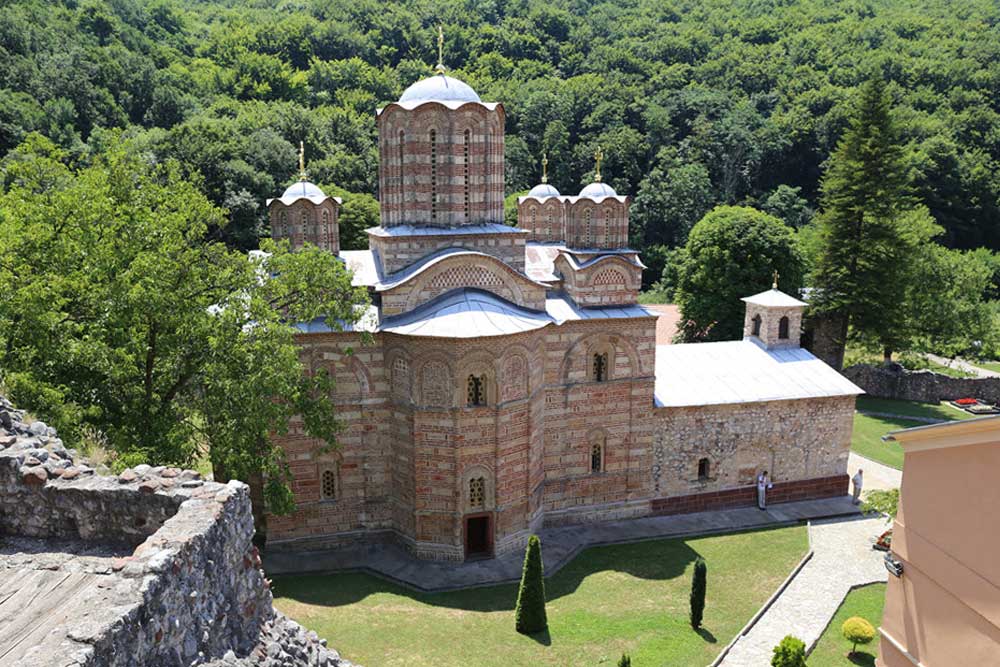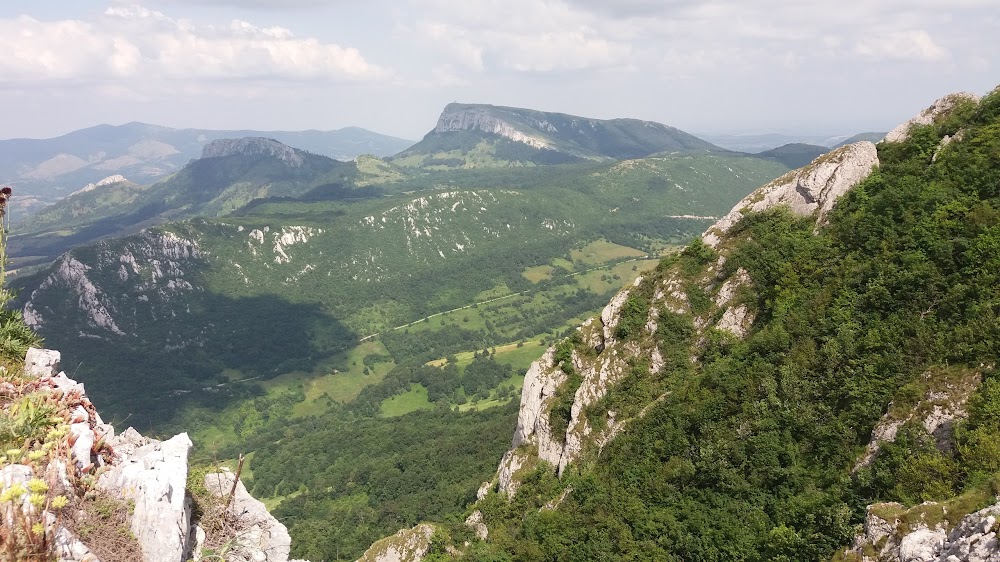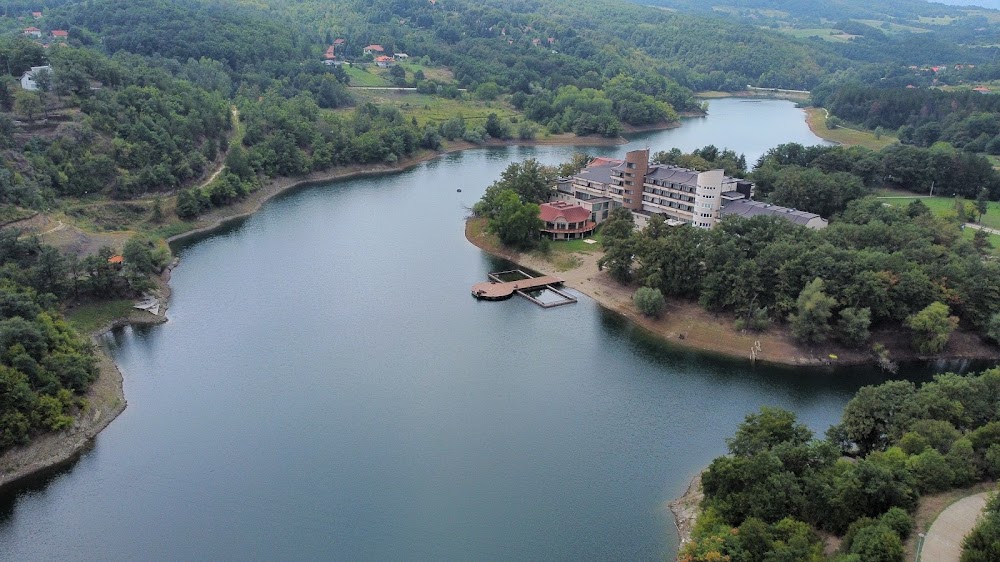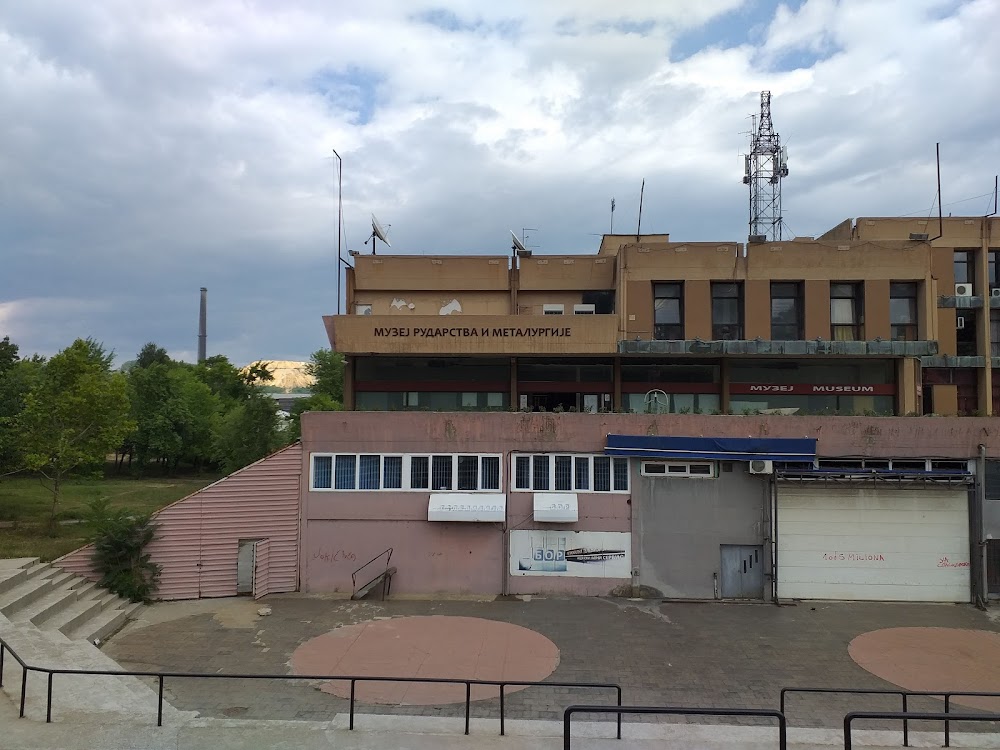Lazar's Cave (Lazareva Pećina)
Related Places
Overview
Lazar's Cave, or Zlotska Pećina as it is known locally, is a captivating cave system located near the town of Bor, nestled within Serbia's lush and mountainous Bor District. Named after the legendary Serbian hero, Prince Lazar, who is said to have sought refuge within its depths, this geological marvel is rich in both natural beauty and historical significance.
The cave is part of the larger "Zlotske Cave" complex, which encompasses several caves situated in the Zlot area. Geologists believe these caves have been forming over millions of years through the slow yet persistent action of water on limestone. Rainwater, slightly acidic from dissolved carbon dioxide, seeps into the ground, gradually dissolving the rock and carving out cavities and tunnels. Over eons, these small spaces have evolved into the grand caverns and passageways we admire today.
Visitors to Lazar's Cave are greeted by its impressive size and intricate network of passages. The cave features multiple chambers and galleries adorned with stunning stalactites and stalagmites. These formations grow exceedingly slowly, typically only a few millimeters per year, as mineral-rich water drips from the ceiling to the floor. The result is a mesmerizing display of natural artistry, with delicate columns, curtains, and other formations that seem sculpted by hand.
Among its many highlights, the "Great Hall" stands out as a vast chamber filled with extraordinary formations. The ceiling soars high above, creating a nearly cathedral-like atmosphere. Carefully positioned artificial lights illuminate certain areas of the Great Hall, revealing the otherworldly beauty of the stalactites and stalagmites, and enhancing the cave's enchanting ambiance.
Exploring Lazar's Cave is made accessible through constructed pathways and bridges, allowing visitors to navigate the rugged and uneven terrain safely. With safety measures such as railings and guided tours in place, even novice spelunkers can experience the cave's splendor without undue risk, making it a perfect destination for adventurers of all ages.
In addition to its geological wonder, Lazar's Cave carries archaeological significance. Excavations have unveiled evidence that early humans utilized the cave as shelter thousands of years ago. Stone tools and other artifacts discovered within suggest it provided a safe haven long before the era of Prince Lazar. This historical layer connects visitors with the past, as they traverse paths once walked by ancient humans.
The cave is also an important ecological site, as its cool, moist environment creates a unique habitat for various bat species and other cave-dwelling creatures. These species are often specially adapted to life in the dark, making Lazar's Cave a vital location for biological studies and conservation efforts. Researchers frequently visit to examine these unique ecosystems, gaining insights into adaptation and evolution.
Managing Lazar's Cave involves a delicate balance between public access and preservation. The Serbian government and local authorities collaborate to maintain the cave, ensuring that human impact is minimized while maximizing its educational and recreational value. Legislation regulates the number of visitors allowed at one time, and certain areas of the cave may be restricted to protect vulnerable sections.
The story of Lazar's Cave is a narrative of natural wonder and historical depth. From its slow formation over millennia by the relentless forces of water and rock to its use by ancient humans and eventual discovery by modern explorers, the cave is a testament to the ever-evolving relationship between humanity and the natural world. Today, it stands not only as a breathtaking natural monument but also as a bridge to the past, welcoming visitors from around the globe to explore its depths and uncover its secrets.







